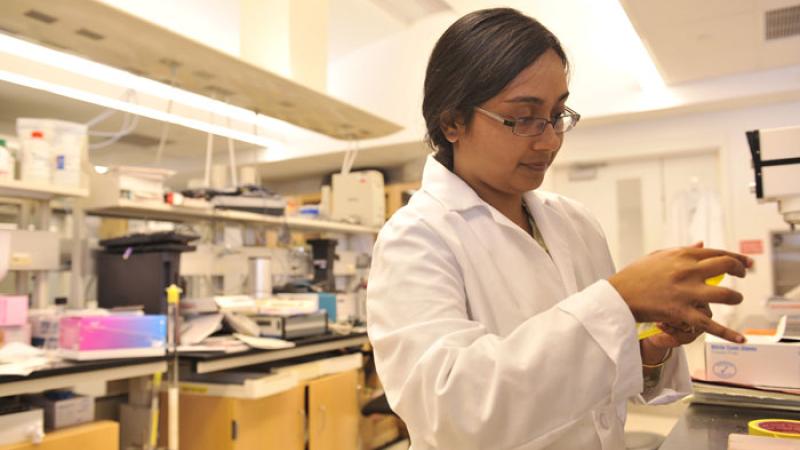January 14, 2015

The college application deadline is fast approaching and within a few short months, it will be decision day for millions of students who must declare where they plan to go to college. Students will take many factors into consideration when making their decision –including size of the student body, location of the institution, availability of preferred major, success of those who have graduated from each school, and financial support –among the variables that differentiate the more than 4,000 colleges and universities in the United States, which includes all private and public four-year and two-year institutions.
This important decision will have a long-term impact on every student’s future opportunities and success. Consideration should be given to the most appropriate type of institution that will provide the skills and education to meet professional and personal life demands that lie ahead. In order to be prepared to address the large, multifaceted global challenges of the future, consider the advantages to attending a technological research university:
1. Research universities incorporate the latest research into classes. Quite simply, research potentiates education. Faculty who are active in research are in touch with the latest developments in their field and are more likely to incorporate their work – including recent discoveries and innovations that are not yet in the textbook – in their classes. Faculty who are both researchers and teachers can better explain advanced material with interesting and real-world examples. This leads to more insights into exciting topics, and provides students with a unique understanding of the world around them.
2. Students benefit from contact with research active faculty and graduate students. Research active faculty have strong industry and academic connections and can help their students network academically and professionally. Collaborative projects with faculty provide students with the opportunity to participate in current research, and even receive recognition for their work, including as co-authors on peer-reviewed publications, and as co-inventors on patents. Undergraduate students at research universities also work with, and benefit from, the mentoring and advice from graduate students, both in the classroom and in shared research activities.
3. Research universities utilize state-of-the-art facilities for research and collaboration. Research universities support government-, industry-, and private foundation- sponsored research in advanced laboratories, using the latest tools and technologies. Top research universities often design laboratories to facilitate shared research activities among collaborators, including those from other top universities and companies. Students who participate in faculty research have the benefit of access to facilities and equipment similar to those used by top commercial and private enterprises. Indeed, only at a research university is it possible to work on cutting edge research problems that address the global challenges facing mankind.
4. Employers value the skills taught at research universities. Students who graduate from research universities are critical thinkers, problem solvers, collaborators, and creative leaders. Employers, both private and public, seek out individuals who have these qualities. Through experiential learning and research inside and outside of the classroom, students graduating from research universities are prepared to exceed the status quo of the workplace.
5. Leading research universities provide opportunities for entrepreneurial ventures. By interacting with and learning from top faculty researchers, students discover new processes, create new products, and innovate new services. Sometimes the ideas nurtured by students become commercially viable business opportunities that can lead to rewarding ventures and startup companies.
Rensselaer Polytechnic Institute, established in 1824 as the first technological research university in the English-speaking world, is a diverse community of dreamers and doers. The Institute was organized around a concept considered quite radical for its time: that students should actively engage with their studies by performing experiments and exploring other participatory forms of learning, rather than sitting passively in lectures. Today, students are drawn to Rensselaer for the sciences and technology, and to disciplines ranging from architecture, business, and engineering to arts and humanities. They want to tackle complex problems, and they have a sincere desire to improve the world.
Currently, new technologies and tools – many of them driven by the volume of data humanity is generating about itself, and by computational advances of all kinds – are offering us tremendous opportunities to understand and reshape our world. Rensselaer President Shirley Ann Jackson has described a new way of working and learning that is required today – what she calls "The New Polytechnic" – collaborating across disciplines, sectors, and regions to harness the power of these new tools and technologies to address the key intersecting challenges and opportunities of our time: in energy security, health, food, water, and national security, as well as the linked challenges of climate change and allocation of scarce resources critical to our future.
Rensselaer Polytechnic Institute is developing and using these tools and technologies so that students can apply them to answer the great global challenges. At Rensselaer, we challenge ourselves and our students with the question, “Why not change the world?” Rensselaer alumni and alumnae have done this throughout history. Students who want to improve lives, to advance society, and, indeed, to change the world, should apply here.
David Brond is the vice president for strategic communications and external relations at Rensselaer Polytechnic Institute.
